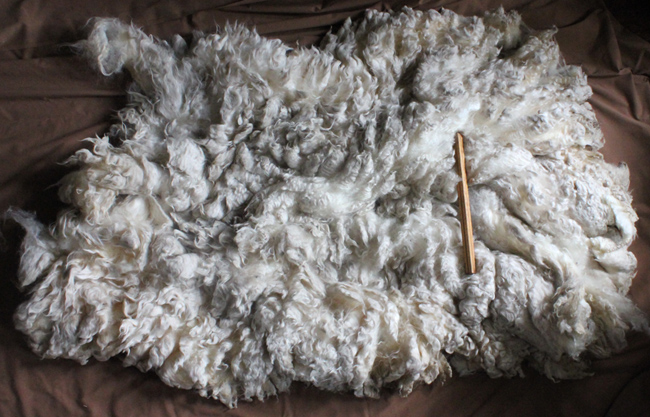
Lustrous Lincoln Fleece |
There are many different breeds of sheep with many different physical characteristics including color and shade. However, as a result of the Industrial Revolution, Big Ag, "Better Living Through Chemistry" and mass market dynamics, the general public in the U.S. today is only aware of one or two types of wool. Above is a fleece newly arrived from a premium fleece grower. It was the first time it was unrolled since the shearing and skirting. "Skirting" is where the the borders of the newly shorn fleece are inspected and the unusable shorter locks, usually from around the legs, are removed from the fleece. At this point, the fleece's locks are still unseparated and lightly joined together after being sheared off all in one piece. The photograph above has the exterior of the fleece visible and illustrates how lustrous and reflective the wool is. The 12 inch ruler provides a sense of the original size of the Lincoln sheet that was shorn. |
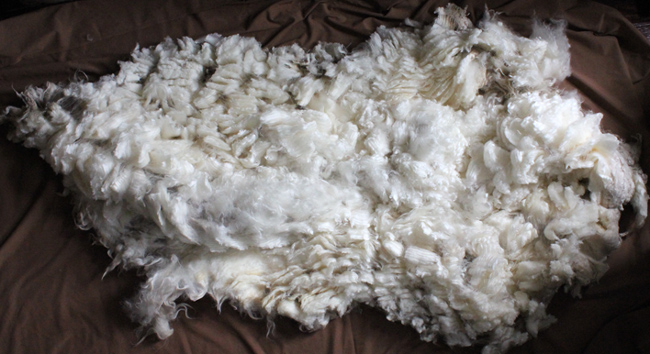
Immediately above is a photo of the same fleece, but turned over to expose the inner side. (This fleece is from Cory Simpson's flock in Montana.) Premium fleece growers develop and maintain flocks of special breeds of sheep, and often work closely with the Rare Breeds Conservancy. In addition, premium fleece growers take special care for their sheep and their sheep's fleece. This includes having the special sheep wear protective coats to shield the growing wool from sun bleaching, abrasion, rain, etc. The special luster of the longwool fleece of the Lincoln breed is highly prized in tapestry art for a number of reasons, technical and aesthetic. It means that the reflectivity of the luster enables the woven pieces not to have to require strong lighting which may be too bright for ambient light in residential spaces, and even damaging over time to traditional fiber art. It also means that the reflectivity of the luster enables the woven pieces to be enjoyed in ambient light without direct illumination. Tapestries of Lincoln wools glow magically in the dark even when only moonlight shines through the windows. |
|
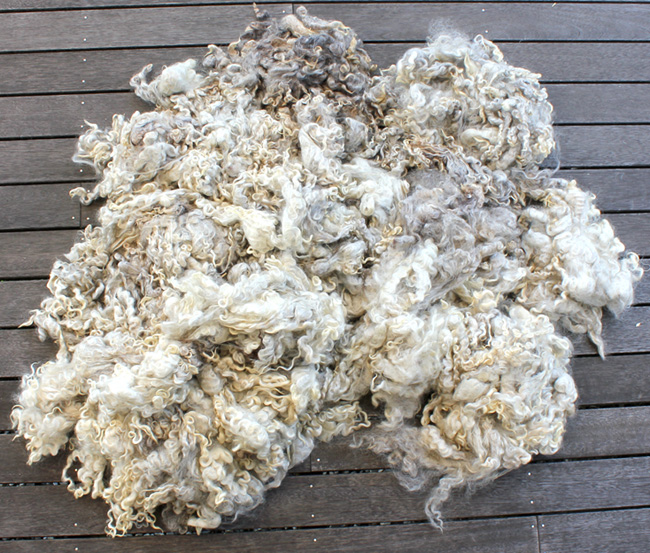
| Above is a photo of a different, but similar Lincoln fleece which has been "scoured," which means it has been soaked in a hot bath with a detergent and only the most gentle movement of water as the first removal of the sheep's lanolin and dirt. In the process of scouring and drying, the wool locks can begin to separate and get mixed up. |
|
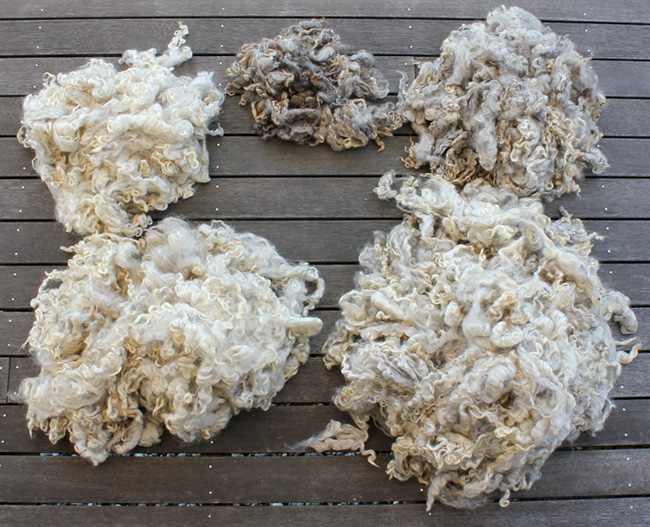
Above is the same wool, but after sorting for shade. |
|
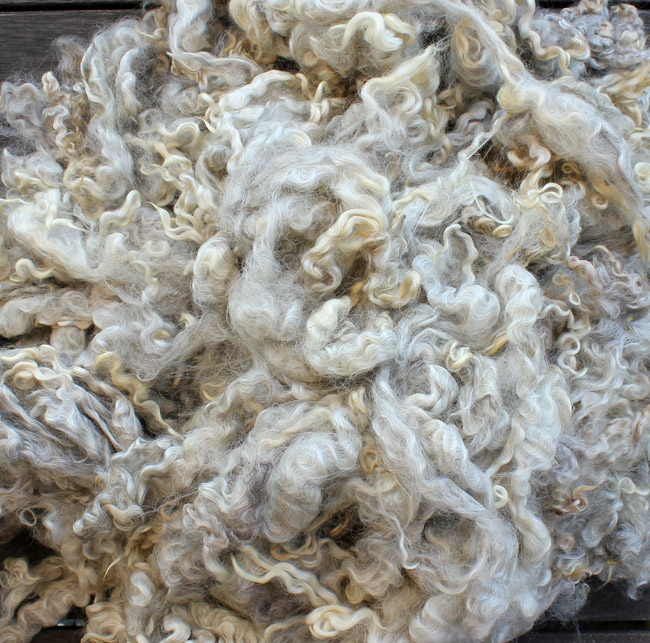
Above, here is a close-up of one of the piles (lower right) of color separated locks. The yellow on the tips some of the locks is fine dust and dirt particles still adhering to the remaining lanolin. That residual material is removed during the teasing, carding, and more vigorous post-spinning washing processes. Platinum and silver fleece like this was used in the weaving of, for example, Requiem and Quercus. The shadings of these fleeces and sorting of them permits the spinning of incremental shades of yarns. And as one tries to isolate the most closely related shades, the natural variations begin to become apparent, which is historically prized in the Near East as abrash. At a certain point in the attempt to separate shades, the abrash becomes more prominent than the separate shades themselves, lending a dreamy quality to the color fields. |
|
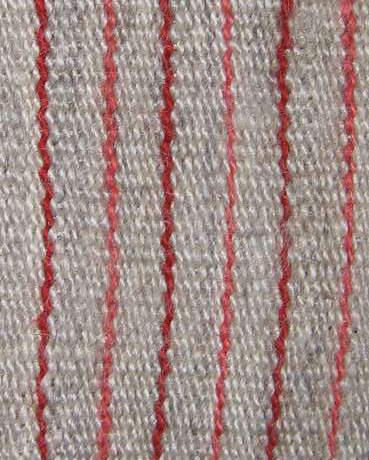
Detail: Requiem |
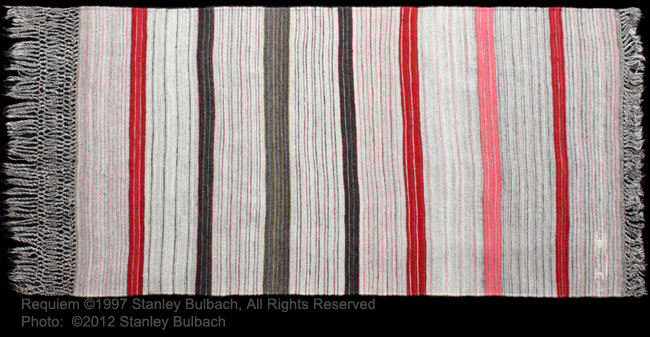
Requiem |
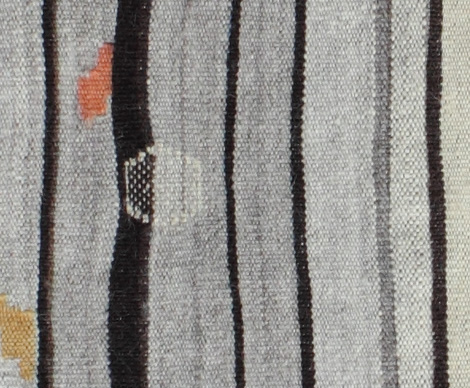
Detail: Quercus |
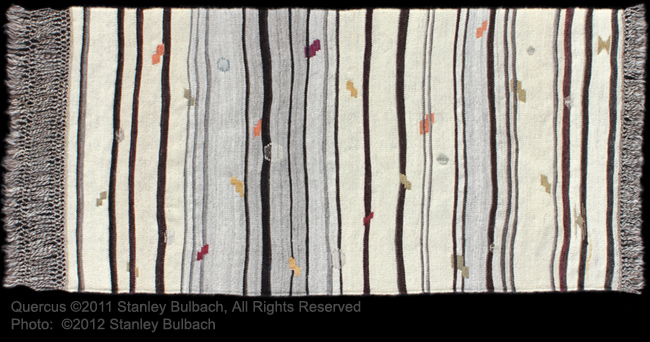
Quercus |
| All photos: ©Stanley Bulbach, |